AKA Smiling Terrapin, Black Terrapin, Black Mud Turtle, or Malaysian Black Mud Turtle
By Mary Hopson at the Turtle Puddle
Although abundant throughout much of the Southeast Asian rainforest, this shy species is seldom seen in the wild. It lives in Thailand, Sumatra, Borneo, Java and peninsular Malaysia. It is almost all black, with several white markings on its head. The eyes are outlined in white. (Adult males lose the white markings.) The feet are fully webbed. The carapace has a rear serrations, a center keel and sometimes 2 lateral keels. It is a small turtle that rarely reaches 8".
The black mud turtle lives in soft-bottomed, heavily vegetated, shallow bodies of warm water. It tends to stay in the shallow water, nestled down in the mud, much of the time. But it will swim about in deeper, still water, and also come out on land to bask occasionally.
In the wild, the black mud turtle is highly carnivorous. It has a broad head and strong jaws for crunching mollusks and carrion bones. Worms, bugs, snails, shrimp, small frogs, etc. would all have a place in the natural diet. It might also eat some fruits that fall into the water. Prepared floating turtle foods (e.g. ReptoMin, Reptile T.E.N. or Turtle Brittle) could be used as part of a captive diet if supplemented with worms, snails and other live foods. They also eat some aquatic plants and other plant matter. Small juveniles will eat bloodworms and crushed ReptoMin.
Crassicollis can swallow on land but generally prefer to eat in, or near, the water.
A 20 gallon long aquarium is the minimum size for one turtle. Keep the water heated to 75 - 82 degrees F (24-28C.)The water does not need to be deep, but there should be hiding places to help this shy animal feel safe. Provide a basking light and dry area in the vivarium, although this turtle seldom basks. An additional reptile light may be physically and psychologically beneficial. During the day, the basking light should heat the air so that one area is about 85 degrees F (29C.) Keep the aquarium at least partially covered to maintain high humidity in the air. The aquarium should be well filtered. Feeding the turtle in a separate container will help keep the aquarium water cleaner. Since this turtle seldom basks, it is especially important to keep the water very clean, to prevent skin and shell infections.
Imported S. crassicollis will probably have multiple health problems, as is the case with most importated Asian turtles. They should be seen by a reptile veterinarian as soon as possible and checked for parasites and infections. This species is being captive bred. A captive bred turtle, although higher priced, is likely to be healthy, saving you a considerable sum in veterinary costs.
S. crassicollis is a tropical rainforest animal. It will enjoy a warm aquarium, stocked with aquatic plants (which juveniles are unlikely to eat, but adults will), caves and other good hiding places. Small feeder fish and snails could be kept available in the aquarium. The turtle will spend most of the time on shallow water shelves, if they are provided, and hiding in the plants. But it will swim in deeper water and, more rarely, come out of the water to bask. The water must be heated and well filtered. They are inclined to be active and inquisitive, exploring every item in the habitat, and crawling around on the basking platform even though they seldom pause to bask.
Sources:
Cox, van Dijk, Nabhitabhata & Thirakhupt. 1998. A Photographic Guide to Snakes and Other Reptiles of Peninsular Malaysia, Singapore and Thailand. Ralph Curtis Pub. Inc., Sanibel Island, FL.
Ernst, C. H. and Barbour, R. W. 1989. Turtles of the World. Smithsonian Institution Press, Washington, D.C.
Highfield, A. C. 1996. Practical Encyclopedia of Keeping and Breeding Tortoises and Freshwater Turtles. Carapace Press, London, England.
Lim Boo Liat & Das, Indraneil. 1999. Turtles of Borneo and Peninsular Malaysia. Natural History Publications (Borneo)
Pritchard, P. C. H. 1979. Encyclopedia of Turtles. TFH Publications, Neptune, New Jersey.
© Mary Hopson, Anchorage, AK
This information sheet may be freely copied and distributed.
Thank you Mary!
[http://www.turtlepuddle.org/exotics/crassicollis.html]
Borneo Black Marsh or Black Leaf Turtle (Siebenrockiella crassicollis)
By the Asian Turtle Conservation Network [ATCNetwork@fpt.vn]
Common name Black Marsh Turtle
Described by Gray, 1831
Conservation status vulnerable
Cites Appendix II
Range
Thailand (lowlands of central and peninsular regions), Laos, Southern Vietnam, Cambodia, Indonesia (Java, Kalimantan, Sumatra), Malaysia, (peninsular and Sarawak), Southern Myanmar and Singapore.
Habitat
Aquatic, slow moving or still bodies of freshwater at low elevations, such as ponds, canals, ditches and swamps (Stuart et al, 2001)
Key Threats
Hunting and trade
Distinguishing features
Head dark with a large white or pale yellow spot behind each eye, broad head with jaws curved into a smile. Carapace completely black. Plastron brown with black radiating blotches or completely black.
Size
Carapace to 20cm (8ins)
Clutch size
3 – 4 eggs (CNMA, 2003)
Nesting season
April – July (CNMA, 2003)
Diet
Omnivorous, aquatic (Stuart et al, 2001)
Subscribe to:
Post Comments (Atom)




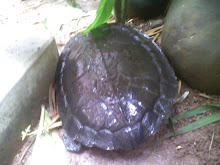


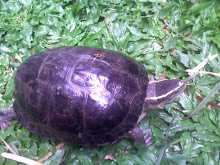









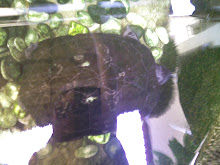














.jpg)
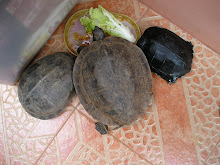
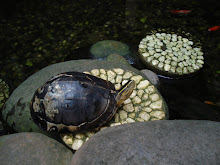+085.jpg)




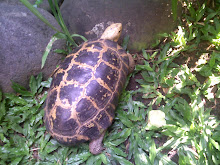
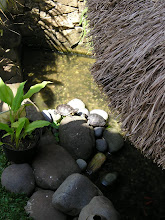.jpg)
No comments:
Post a Comment